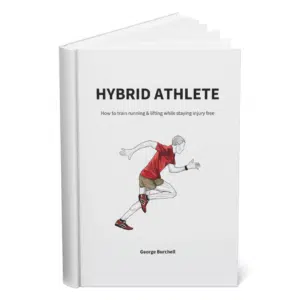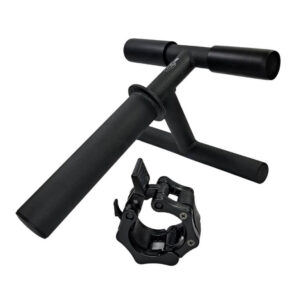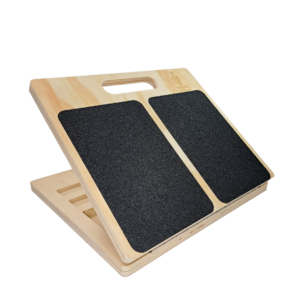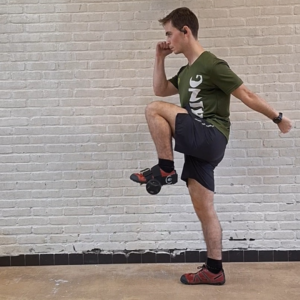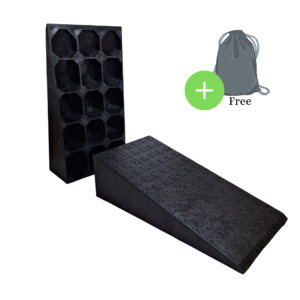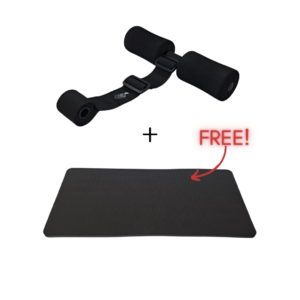
If you ever even touched upon the topic of Knees-Over-Toes, you must have heard about the slant board, and by extension – slant board squats.
The idea behind them is the same as with the elevated squats, only you get to control the actual angle.
Controlled heel elevation comes with a lot of benefits for athletes of all levels – especially for beginners and for KOT enthusiasts looking for an extra challenge. So, let’s see what slant board squats are all about.
Table of Contents

What Is A Slant Board?
The answer is in the name – a slant board is an exercise tool that helps you elevate your heels while you squat. This has multiple benefits, especially if you’re someone who’s looking to improve your leg day and overall mobility.
A good slant board will have adjustable angles, as well as some sort of gripped surface to help you not slip from it while you squat.
Lastly, a slant board is a tool for athletes who are looking to spice up their squat game.
Slant Board Squats Help With a Lot of Beginner-level Challenges
The biggest benefit of slant board squats is addressing ankle mobility, or lack thereof rather. A lot of people can’t get into a deep squat, with knees going over the toes, due to poor ankle dorsiflexion (among other mobility issues).
By going into a slant board squat, you help your knees align while exceeding the toe line. If you ever tried lifting shoes, you know the feeling. However, at Hybrid Athlete, we recommend building up your mobility instead of compensating with shareware (there’s no better shoe than a minimalist barefoot shoe).
All in all, a slant board squat is there to help you reach that full range of motion. That’s where the adjustable angle comes into play as well – you start with a higher angle and work your way toward a flat surface.
Squat Wedges as a Slant Board Alternative
When it comes to slant board squats, there are alternatives out there – the squat wedges. The squat wedges are like individual slant boards for each of your legs.
However, even though individual heel elevation comes with benefits (i.e. for pistol squats), wedges are not as beginner-friendly as the slant board. So, if you’re looking for heel elevation as a beginner, a slant board is a more suitable option.
How To Do A Slant Board Squat to Improve Mobility and Squat Depth
For people with limited ankle mobility, slant board squats (the standard version) are arguably easier than regular squats. Here’s how to do a slant board squat (with some extra tips):
- Adjust the angle of the slant board (the higher the angle, the easier it will be to go to full ROM)
- Get on the board with both of your feet, in a neutral stance
- Brace your core and slowly descend into a squat
- Push your knees forward (yes, allow them to go over your toes)
- Hold for a brief moment and ascend
*For extra stability and to counteract the weight of your behind (which is often the issue with beginners) you can hold a weight or a kettlebell close to your chest.
A Slant Board Isn’t Only For Beginners
We mentioned that a slant board can be used to spice up your squats. Here are 5 slant board exercises you should implement into your lower-leg routine for optimal strength and mobility results:
- Slant board tib raises
- Jefferson curls
- Poliquin step-ups
- Slant board goblet/VMO squat
- Slant board pistol squats

Slant Board Squats Verdict: Who Can Benefit From Them?
The short answer is – everyone can benefit from slant board squats.
On one side, heel elevation helps novices develop a deeper squat and ankle/knee stability. There are numerous benefits of being able to sit in a deep squat.
On the other, advanced athletes can use the slant board to make standard KOT exercises more challenging, which plays a key role in leg joint bulletproofing.
So, what are you waiting for – get your slant board level up your squat game ASAP!
Get the best Knees-Over-Toes Equipment HERE:
Above all, a storyteller. Then comes marketing, branding, writing music, powerlifting, and woodworking.

